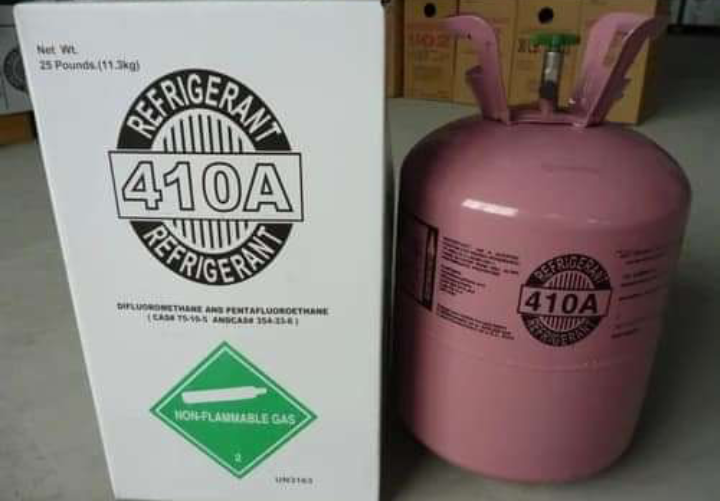
In the world of HVAC (Heating, Ventilation, and Air Conditioning), the choice of refrigerants plays a crucial role in ensuring efficient cooling and heating while also being environmentally responsible. One of the most widely used refrigerants in recent years is R410A. In this blog post, we will go into the world of R410A refrigerant, discussing its benefits, properties, and the environmental considerations associated with its use.
What is R410A Refrigerant?
R410A, chemically known as hydrofluorocarbon-32/125, is a popular refrigerant used in air conditioning systems and heat pumps. It was developed as an alternative to the older R22 refrigerant, which was found to have adverse effects on the ozone layer.
Benefits of R410A Refrigerant:
1. High Efficiency: One of the significant advantages of R410A is its efficiency. It has a higher heat-carrying capacity than its predecessors, making it ideal for air conditioning and heat pump systems. This means that R410A-based systems can provide faster and more effective cooling and heating, reducing energy consumption and operating costs.
2. Ozone-Friendly: R410A is an HFC (Hydrofluorocarbon) refrigerant, which makes it ozone-friendly. Unlike older refrigerants like R22, R410A does not contain chlorine, which is known to contribute to ozone layer depletion. Its use aligns with international efforts to protect the Earth’s ozone layer.
3. Better Heat Transfer Properties: R410A has excellent heat transfer properties, allowing for efficient heat exchange in air conditioning and heat pump systems. This translates to more consistent and comfortable indoor temperatures.
4. Compatibility: R410A is compatible with modern, high-efficiency HVAC systems. Many new air conditioners and heat pumps are designed to work optimally with this refrigerant, ensuring peak performance.
5. Longevity: R410A is a stable and long-lasting refrigerant, contributing to the durability of HVAC systems.
Environmental Considerations
While R410A offers several advantages, it’s essential to consider its environmental impact:
1. Global Warming Potential (GWP): R410A has a higher GWP compared to some other refrigerants, which means it has a greater potential to contribute to global warming if it leaks into the atmosphere.
2. Phasedown Regulations: In response to environmental concerns, many countries have initiated or plan to initiate the phaseout of high-GWP refrigerants like R410A. This could impact the availability and cost of servicing R410A-based systems in the future.
3. Alternative Refrigerants: As environmental regulations become stricter, the HVAC industry is exploring alternative refrigerants with lower GWPs. Some of these alternatives, like R32 and R454B, are being considered as replacements for R410A. Switching to these alternatives may be necessary to meet future environmental standards.
Maintenance and Safety:
Proper maintenance of R410A-based systems is crucial to prevent refrigerant leaks, as these can be harmful when released into the atmosphere. In the event of a leak, it’s essential to consult a qualified HVAC technician for repairs, as R410A is pressurized and can pose safety risks if mishandled.
R410A refrigerant has played a significant role in improving the efficiency and performance of air conditioning and heat pump systems. Its ozone-friendly properties and compatibility with modern HVAC equipment have made it a popular choice. However, environmental concerns, primarily related to its high GWP, have led to increased scrutiny and the exploration of alternative refrigerants.
As the HVAC industry continues to evolve, it’s important for consumers and businesses to stay informed about changing regulations and technological advancements in refrigerants. Ultimately, making informed choices about refrigerants will not only ensure comfortable indoor environments but also contribute to a more sustainable future for our planet.

Leave a Reply